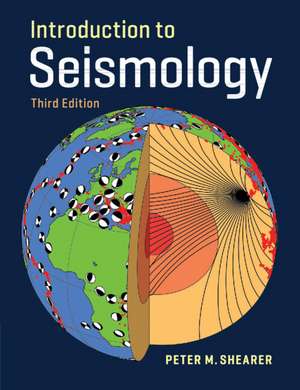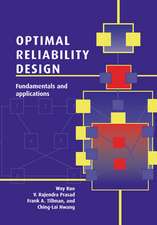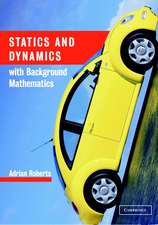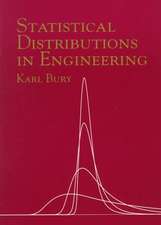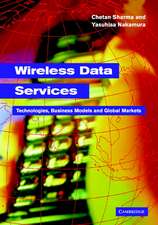Introduction to Seismology
Autor Peter M. Sheareren Limba Engleză Paperback – 29 mai 2019
| Toate formatele și edițiile | Preț | Express |
|---|---|---|
| Paperback (2) | 395.37 lei 22-36 zile | +38.52 lei 6-12 zile |
| Cambridge University Press – 29 mai 2019 | 395.37 lei 22-36 zile | +38.52 lei 6-12 zile |
| Cambridge University Press – 10 iun 2009 | 535.25 lei 43-57 zile | |
| Hardback (1) | 865.26 lei 43-57 zile | |
| Cambridge University Press – 29 mai 2019 | 865.26 lei 43-57 zile |
Preț: 395.37 lei
Preț vechi: 429.74 lei
-8% Nou
Puncte Express: 593
Preț estimativ în valută:
75.68€ • 82.23$ • 63.61£
75.68€ • 82.23$ • 63.61£
Carte disponibilă
Livrare economică 31 martie-14 aprilie
Livrare express 15-21 martie pentru 48.51 lei
Preluare comenzi: 021 569.72.76
Specificații
ISBN-13: 9781316635742
ISBN-10: 1316635740
Pagini: 442
Ilustrații: 243 b/w illus. 12 tables
Dimensiuni: 190 x 246 x 21 mm
Greutate: 0.95 kg
Ediția:3Revizuită
Editura: Cambridge University Press
Colecția Cambridge University Press
Locul publicării:Cambridge, United Kingdom
ISBN-10: 1316635740
Pagini: 442
Ilustrații: 243 b/w illus. 12 tables
Dimensiuni: 190 x 246 x 21 mm
Greutate: 0.95 kg
Ediția:3Revizuită
Editura: Cambridge University Press
Colecția Cambridge University Press
Locul publicării:Cambridge, United Kingdom
Cuprins
1. Introduction; 2. Stress and strain; 3. The seismic wave equation; 4. Ray theory: travel times; 5. Inversion of travel time data; 6. Ray theory: amplitude and phase; 7. Reflection seismology and related topics; 8. Surface waves and normal modes; 9. Earthquakes and source theory; 10. Earthquake prediction; 11. Seismometers and seismographs; 12. Earth noise; 13. Anisotropy; Appendix A; Appendix B; Appendix C; Appendix D; Appendix E; Appendix F; Bibliography; Index.
Recenzii
'This classic text is an excellent introduction to modern seismology. Its concise coverage of theory, imaginative problem sets, and innovative computer exercises make it an ideal resource for students and course leaders.' Ian D. Bastow, Imperial College London
'Peter M. Shearer's clear and engaging explanations enable students to approach concepts with physical intuition and easy-to-understand math. The exercises, some including Python and Matlab programs, provide valuable opportunities for students to deepen their working knowledge of the material.' Karen Fischer, Brown University, Rhode Island
'This new edition includes up-to-date revisions on Earth noise and its cross-correlation study, and on anisotropy. Both topics have moved from peripheral to the center of seismological research, and these chapters are welcome additions for students embarking on research projects.' Toshiro Tanimoto, University of California, Santa Barbara
'This elegant book combines basic seismic theory with approachable mathematical derivation, physical intuition, and practical examples for beginners in the field. Its concise yet insightful introduction to recent advances in seismology exposes students to a wide range of seismic research topics.' Qinya Liu, University of Toronto
Review of previous edition: '… a concise and practical survey text that does a fine job of covering the basics … it is ideally suited for an intermediate to advanced undergraduate class …' Rick Aster, Seismological Research Letters
Review of previous edition: '… Shearer has a knack for clear explanations and for making otherwise difficult concepts easy to understand …' Anne Sheehan, EOS
Review of previous edition: 'As an introductory course textbook for upper-level undergraduate students, it may be the best textbook available now.' Toshiro Tanimoto, Physics Today
Review of previous edition: 'The fundamental concepts are clearly explained, emphasizing intuitive understanding …' Applied Mechanics Reviews
Review of previous edition: '… an excellent introduction for non-seismologists to grasp concepts behind seismological techniques.' Hitoshi Kawakatsu, Episodes
'Peter M. Shearer's clear and engaging explanations enable students to approach concepts with physical intuition and easy-to-understand math. The exercises, some including Python and Matlab programs, provide valuable opportunities for students to deepen their working knowledge of the material.' Karen Fischer, Brown University, Rhode Island
'This new edition includes up-to-date revisions on Earth noise and its cross-correlation study, and on anisotropy. Both topics have moved from peripheral to the center of seismological research, and these chapters are welcome additions for students embarking on research projects.' Toshiro Tanimoto, University of California, Santa Barbara
'This elegant book combines basic seismic theory with approachable mathematical derivation, physical intuition, and practical examples for beginners in the field. Its concise yet insightful introduction to recent advances in seismology exposes students to a wide range of seismic research topics.' Qinya Liu, University of Toronto
Review of previous edition: '… a concise and practical survey text that does a fine job of covering the basics … it is ideally suited for an intermediate to advanced undergraduate class …' Rick Aster, Seismological Research Letters
Review of previous edition: '… Shearer has a knack for clear explanations and for making otherwise difficult concepts easy to understand …' Anne Sheehan, EOS
Review of previous edition: 'As an introductory course textbook for upper-level undergraduate students, it may be the best textbook available now.' Toshiro Tanimoto, Physics Today
Review of previous edition: 'The fundamental concepts are clearly explained, emphasizing intuitive understanding …' Applied Mechanics Reviews
Review of previous edition: '… an excellent introduction for non-seismologists to grasp concepts behind seismological techniques.' Hitoshi Kawakatsu, Episodes
Notă biografică
Descriere
Offers a concise and accessible introduction to seismic theory, with a focus on the mathematical fundamentals of global seismology.
